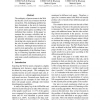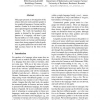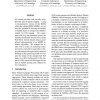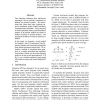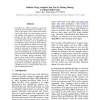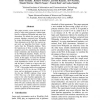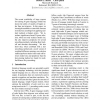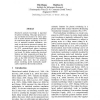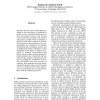EMNLP
2009
14 years 28 days ago
2009
The ambiguity of person names in the Web has become a new area of interest for NLP researchers. This challenging problem has been formulated as the task of clustering Web search r...
EMNLP
2009
14 years 28 days ago
2009
This paper presents an investigation of the relation between words and their gender in two gendered languages: German and Romanian. Gender is an issue that has long preoccupied li...
EMNLP
2009
14 years 28 days ago
2009
We extend previous work on fully unsupervised part-of-speech tagging. Using a non-parametric version of the HMM, called the infinite HMM (iHMM), we address the problem of choosing...
EMNLP
2009
14 years 28 days ago
2009
Tree Adjoining Grammars have well-known advantages, but are typically considered too difficult for practical systems. We demonstrate that, when done right, adjoining improves tran...
EMNLP
2009
14 years 28 days ago
2009
User clicks on a URL in response to a query are extremely useful predictors of the URL's relevance to that query. Exact match click features tend to suffer from severe data s...
EMNLP
2009
14 years 28 days ago
2009
This paper presents a new method of developing a large-scale hyponymy relation database by combining Wikipedia and other Web documents. We attach new words to the hyponymy databas...
EMNLP
2009
14 years 28 days ago
2009
A significant portion of the world's text is tagged by readers on social bookmarking websites. Credit attribution is an inherent problem in these corpora because most pages h...
EMNLP
2009
14 years 28 days ago
2009
The recent availability of large corpora for training N-gram language models has shown the utility of models of higher order than just trigrams. In this paper, we investigate meth...
EMNLP
2009
14 years 28 days ago
2009
EMNLP
2009
14 years 28 days ago
2009
This paper presents a parse-and-paraphrase paradigm to assess the degrees of sentiment for product reviews. Sentiment identification has been well studied; however, most previous ...
